
How to Use relay_5V: Examples, Pinouts, and Specs
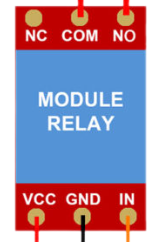
 Design with relay_5V in Cirkit Designer
Design with relay_5V in Cirkit DesignerIntroduction
A 5V relay is an electromechanical switch that uses an electromagnetic coil to open or close contacts. It allows a low voltage signal (5V) to control high voltage or high current circuits, making it an essential component in automation, home appliances, and industrial control systems.
Explore Projects Built with relay_5V
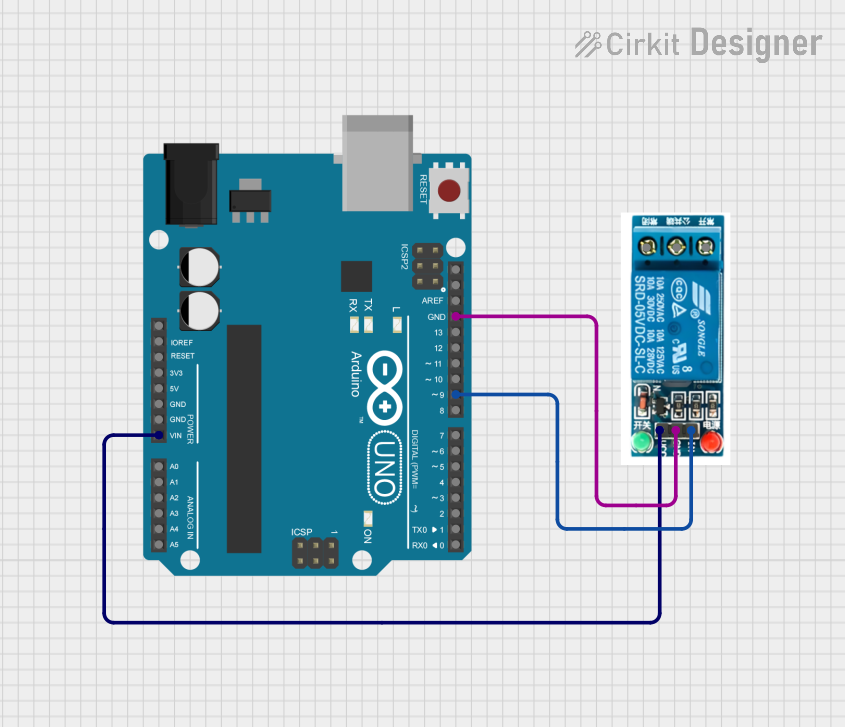
 Open Project in Cirkit Designer
Open Project in Cirkit Designer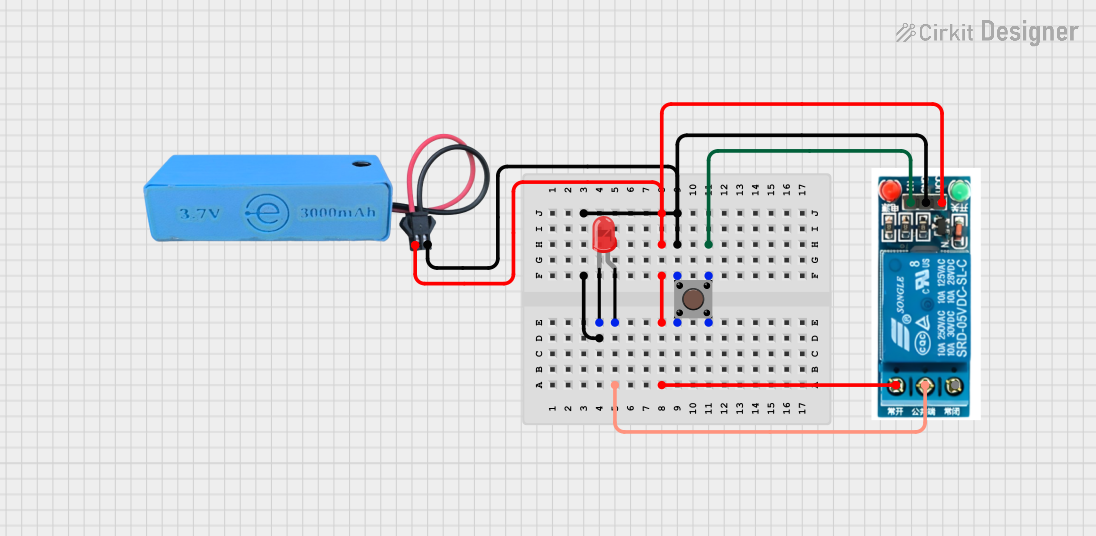
 Open Project in Cirkit Designer
Open Project in Cirkit Designer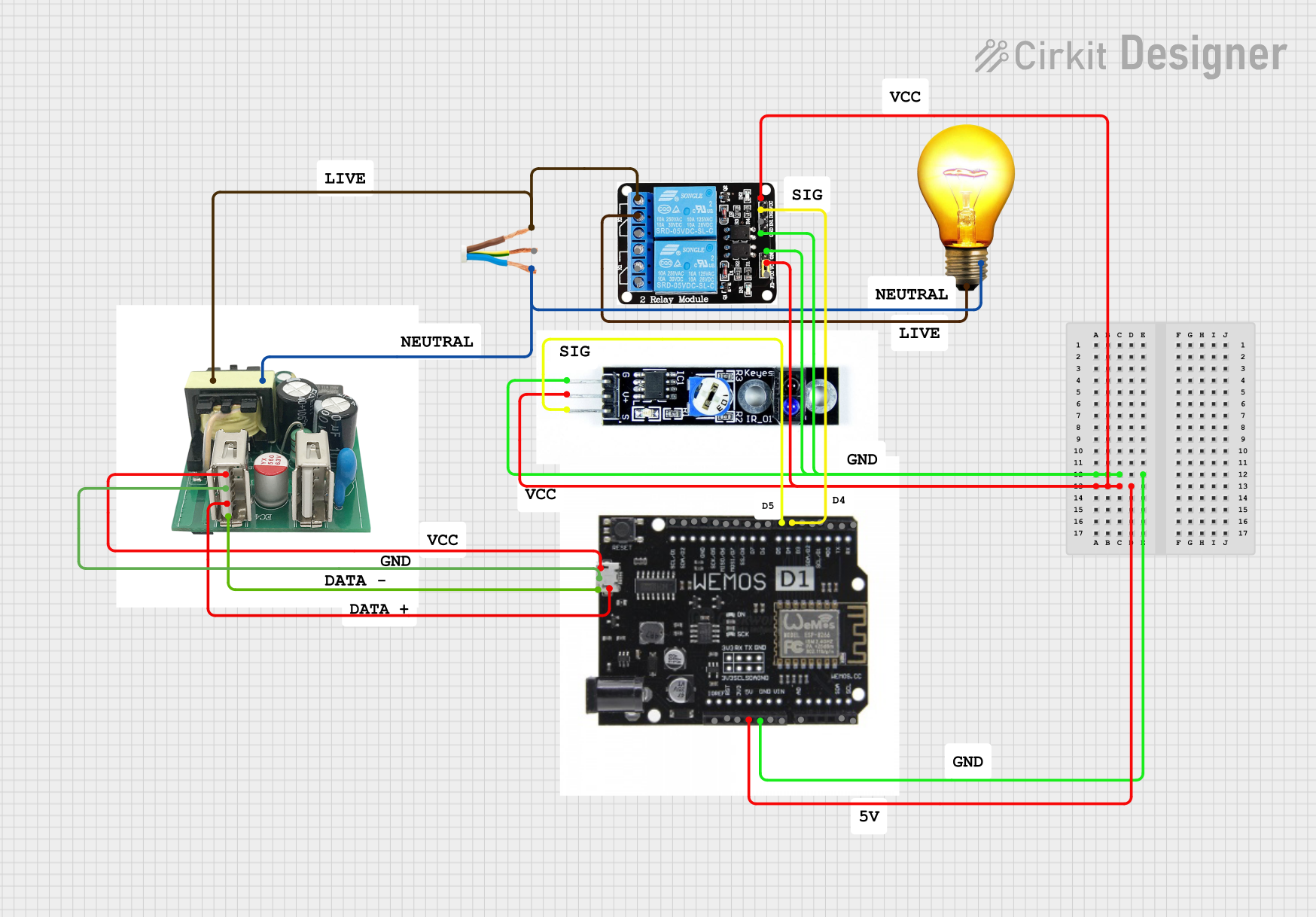
 Open Project in Cirkit Designer
Open Project in Cirkit Designer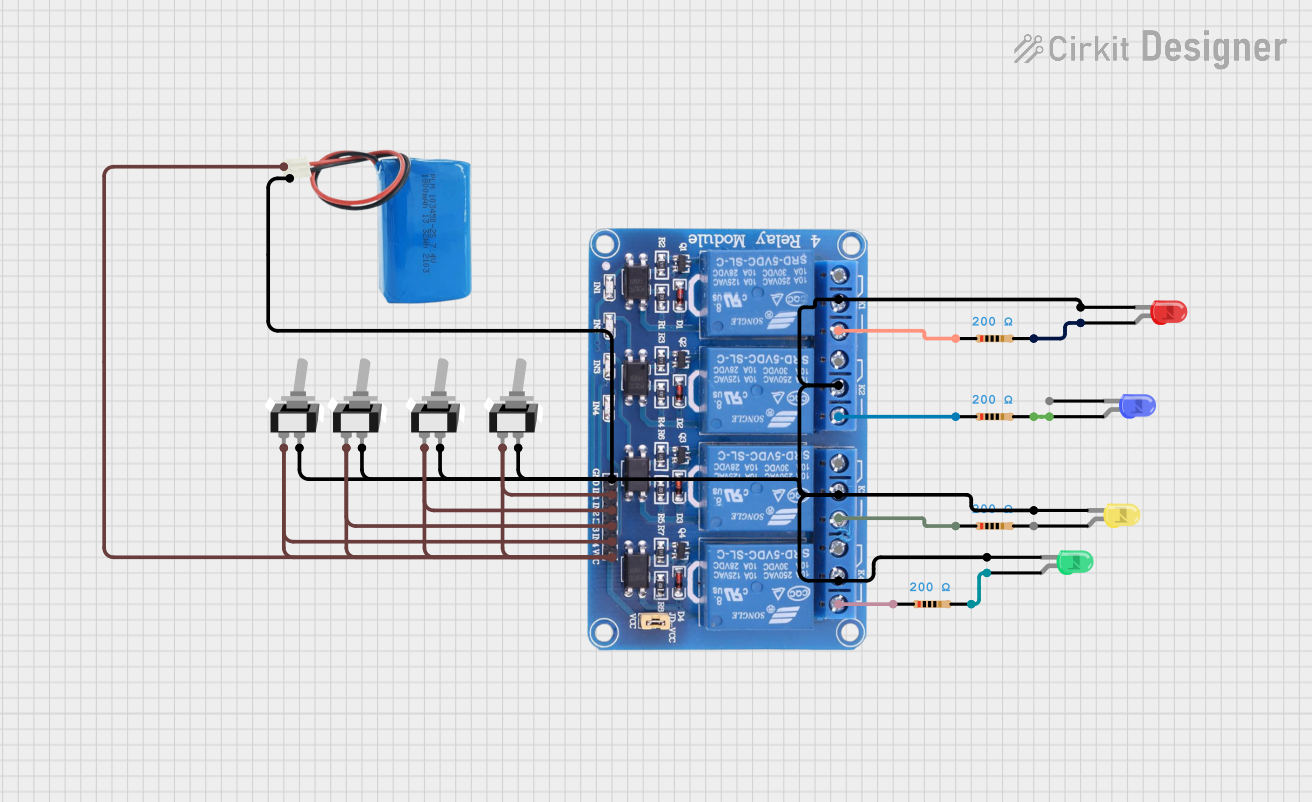
 Open Project in Cirkit Designer
Open Project in Cirkit DesignerExplore Projects Built with relay_5V

 Open Project in Cirkit Designer
Open Project in Cirkit Designer
 Open Project in Cirkit Designer
Open Project in Cirkit Designer
 Open Project in Cirkit Designer
Open Project in Cirkit Designer
 Open Project in Cirkit Designer
Open Project in Cirkit DesignerCommon Applications and Use Cases
- Home Automation: Controlling lights, fans, or other appliances remotely.
- Industrial Control: Switching high-power devices like motors or heaters.
- Microcontroller Projects: Interfacing with Arduino, Raspberry Pi, or other microcontrollers to control external devices.
- Safety Systems: Isolating low voltage control circuits from high voltage loads.
Technical Specifications
Key Technical Details
- Operating Voltage: 5V DC (coil voltage)
- Trigger Voltage: Typically 3.3V to 5V (logic level compatible)
- Contact Ratings:
- Maximum Voltage: 250V AC or 30V DC
- Maximum Current: 10A
- Coil Resistance: ~70Ω (varies by model)
- Switching Type: SPDT (Single Pole Double Throw) or DPDT (Double Pole Double Throw)
- Isolation: Provides electrical isolation between control and load circuits.
Pin Configuration and Descriptions
The 5V relay module typically has the following pins:
| Pin Name | Description |
|---|---|
| VCC | Connect to 5V DC power supply to energize the relay coil. |
| GND | Ground connection for the relay module. |
| IN | Control signal input (logic HIGH to activate the relay, logic LOW to deactivate). |
| COM | Common terminal for the relay switch. |
| NO | Normally Open terminal; connected to COM when the relay is activated. |
| NC | Normally Closed terminal; connected to COM when the relay is deactivated. |
Usage Instructions
How to Use the Component in a Circuit
- Power the Relay: Connect the VCC pin to a 5V DC power source and the GND pin to ground.
- Control Signal: Use a microcontroller (e.g., Arduino) or a 5V logic signal to control the IN pin.
- Connect the Load:
- For devices that should turn ON when the relay is activated, connect the load between the COM and NO terminals.
- For devices that should turn OFF when the relay is activated, connect the load between the COM and NC terminals.
- Isolation: Ensure proper isolation between the control circuit and the high voltage load to prevent damage or hazards.
Important Considerations and Best Practices
- Flyback Diode: If you're using a bare relay (not a module), add a flyback diode across the coil terminals to protect the control circuit from voltage spikes.
- Current Ratings: Ensure the load does not exceed the relay's maximum current and voltage ratings.
- Power Supply: Use a stable 5V power supply to avoid relay malfunction.
- Safety: When working with high voltage, ensure proper insulation and follow safety guidelines.
Example: Connecting a 5V Relay to an Arduino UNO
Below is an example of how to control a 5V relay using an Arduino UNO to turn a light bulb ON and OFF.
Circuit Connections
- Relay Module:
- VCC → 5V pin on Arduino
- GND → GND pin on Arduino
- IN → Digital pin 7 on Arduino
- Load:
- Connect one terminal of the light bulb to the COM terminal.
- Connect the other terminal of the light bulb to the live AC line.
- Connect the NO terminal to the neutral AC line.
Arduino Code
// Define the relay control pin
const int relayPin = 7;
void setup() {
// Set the relay pin as an output
pinMode(relayPin, OUTPUT);
// Ensure the relay is OFF at startup
digitalWrite(relayPin, LOW);
}
void loop() {
// Turn the relay ON (light bulb ON)
digitalWrite(relayPin, HIGH);
delay(5000); // Keep the light ON for 5 seconds
// Turn the relay OFF (light bulb OFF)
digitalWrite(relayPin, LOW);
delay(5000); // Keep the light OFF for 5 seconds
}
Troubleshooting and FAQs
Common Issues and Solutions
Relay Not Activating:
- Cause: Insufficient voltage or current to the relay coil.
- Solution: Ensure the VCC pin is connected to a stable 5V power source and the IN pin receives a proper HIGH signal.
Relay Stuck in One State:
- Cause: Damaged relay contacts or coil.
- Solution: Replace the relay if it is physically damaged or not switching.
Load Not Turning ON/OFF:
- Cause: Incorrect wiring of the load to the relay terminals.
- Solution: Double-check the connections to the COM, NO, and NC terminals.
Microcontroller Resetting When Relay Activates:
- Cause: Voltage spikes or insufficient power supply.
- Solution: Add a flyback diode across the relay coil and ensure the power supply can handle the relay's current draw.
FAQs
Q: Can I use a 5V relay with a 3.3V microcontroller?
A: Yes, but you may need a transistor or MOSFET to amplify the control signal to 5V.Q: Is it safe to use a 5V relay for AC loads?
A: Yes, as long as the load's voltage and current are within the relay's rated specifications.Q: Why is a clicking sound coming from the relay?
A: The clicking sound is normal and indicates the relay is switching states. If it clicks continuously, check for a faulty control signal.Q: Can I control multiple relays with one microcontroller?
A: Yes, as long as each relay has its own control pin and the microcontroller can handle the combined current draw.